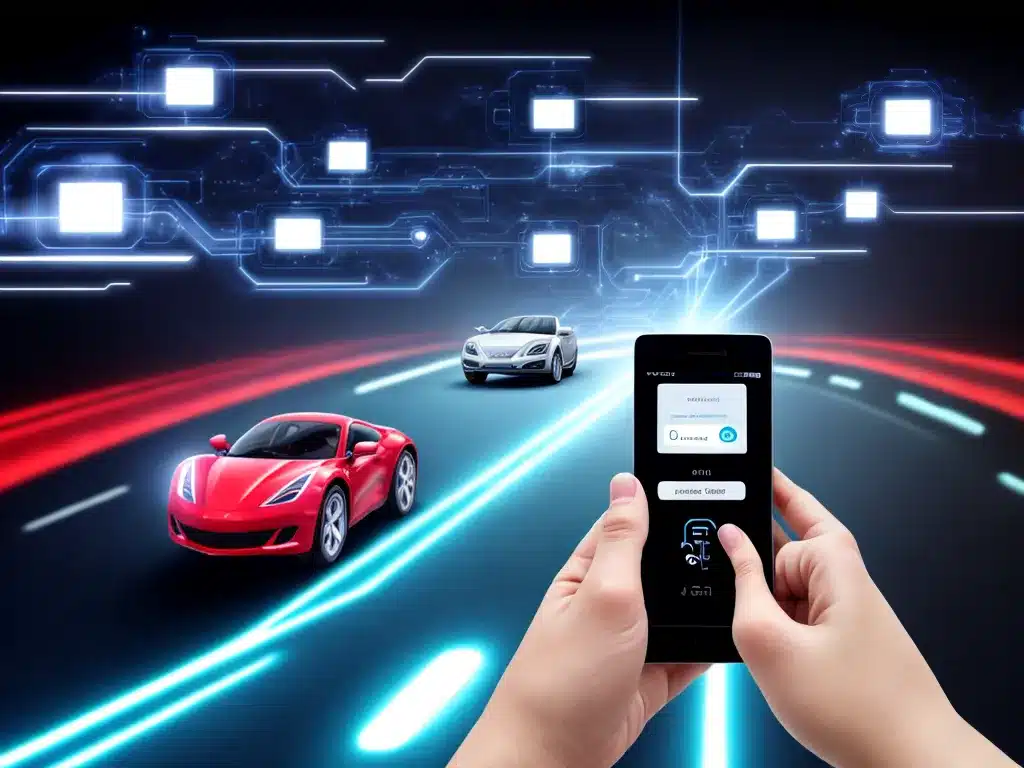IoT Changing Future of Automotive Industry
The automotive industry is undergoing a major transformation due to the rise of connected vehicles and the Internet of Things (IoT). Here is an in-depth look at how IoT is changing the future of the automotive industry.
What is IoT in the Automotive Industry
The Internet of Things (IoT) refers to the growing number of internet-connected devices and objects that can collect and exchange data. In the automotive industry, IoT connects vehicles to the internet and to each other. This allows vehicles to communicate with other devices, systems, and services – including other vehicles (V2V), infrastructure (V2I), networks (V2N), passengers (V2P) etc.
IoT in automotive includes integrating sensors, software, connectivity, and data analytics capabilities into vehicles. This enables real-time monitoring of vehicle performance, remote diagnostics, preventive maintenance, on-demand services, and more. Some key IoT applications in automotive include:
- Connected vehicles: Internet-enabled cars that connect to WiFi and cellular networks to share data and communicate.
- Vehicle telematics: Capturing and transmitting real-time data about the vehicle such as location, speed, maintenance needs etc.
- Infotainment: Providing entertainment, news, social media, and other connected services through the in-vehicle infotainment system.
- Vehicle-to-everything (V2X) communication: Enabling vehicles to connect and share data with other vehicles, infrastructure, networks, pedestrians etc.
- Over-the-air (OTA) updates: Remotely installing software updates and new capabilities on vehicles.
- Usage-based insurance (UBI): Insurance plans based on actual vehicle usage and driving data collected by telematics devices.
IoT Benefits for Automakers
The rise of IoT and connected vehicles provides tremendous new opportunities for automotive manufacturers. Here are some of the key benefits:
Enhanced Customer Experience
IoT allows automakers to deliver an enhanced and personalized customer experience. Connected services like real-time traffic alerts, parking assistance, remote access, and in-vehicle entertainment customized to driver preferences improve driver satisfaction.
New Revenue Streams
Connected services like in-vehicle payments, e-commerce, premium infotainment apps, and data analytics services can become new revenue sources for automakers. Monetizing data from connected vehicles also opens up new revenue possibilities.
Improved Vehicle Performance
Real-time vehicle monitoring and diagnostics enabled by IoT improves vehicle performance, fuel efficiency, uptime, and asset utilization. It also helps automate maintenance and enables over-the-air software updates.
Safety and Autonomous Driving
V2X communication, real-time data exchange between vehicles and infrastructure, ADAS sensors etc enabled by IoT improves road safety and facilitates the development of autonomous vehicles.
Streamlined Operations
IoT enables automakers to gather data from across the supply chain and factory floors. This data can be used to optimize manufacturing operations, supply chain management, inventory handling etc.
IoT Use Cases in Automotive
Here are some examples of IoT use cases and applications that are transforming the automotive industry:
Connected Infotainment
Infotainment systems that connect to the internet provide entertainment, news, maps, social media integration, e-commerce services etc. to improve the driver and passenger experience. For example, Harman Ignite provides a connected infotainment platform.
Vehicle Telematics
Companies like Zubie, Geotab, and Samsara provide plug-in telematics devices that can collect and transmit data on vehicle location, driving habits, fuel usage, maintenance issues etc. This enables fleet tracking and management.
Usage-Based Insurance
Progressive’s Snapshot and Allstate’s Drivewise are usage-based insurance programs that use OBD-II devices to record driving data like mileage, acceleration etc. to provide customized insurance rates based on actual driving behavior.
Electric Vehicle Charging
Public EV charging stations powered by IoT connectivity and apps like ChargePoint provide real-time status updates, remote management, driver notifications and integrate payment functionalities for a seamless charging experience.
Vehicle-to-Everything (V2X) Communication
Cadillac’s V2V (vehicle-to-vehicle) technology enables cars to wirelessly communicate with each other and exchange information about speed, location, direction etc. to improve road safety and avoid collisions.
Connected Mobility Services
Services like GM’s OnStar use IoT connectivity to provide in-vehicle emergency assistance, WiFi hotspots, remote diagnostics, stolen vehicle tracking etc. for greater convenience and safety.
Over-the-Air (OTA) Updates
Companies like Tesla Motors use OTA updates to remotely install latest software, new apps, features, and upgrades on vehicles over-the-air without requiring a visit to the service center.
IoT Challenges for the Automotive Industry
Despite its immense potential, IoT adoption in automotive also comes with some key challenges:
-
Security risks: Connected vehicles are vulnerable to cyberattacks and data breaches. Automakers need robust cybersecurity measures.
-
Data privacy: Sharing and monetizing data from connected vehicles raises privacy concerns that must be addressed carefully.
-
Complex integration: Integrating IoT capabilities requires coordination across complex vehicle systems spanning hardware and software.
-
Costs: Sensors, connectivity modules, and new IT infrastructure required for enabling IoT capabilities leads to increased costs.
-
Standardization: Lack of common standards for V2X communication, data formats etc. hinders interoperability between various IoT systems.
-
Uncertain ROI: Monetizing connected services and long-term ROI remains uncertain, making the business case complex for automakers.
The Road Ahead
In summary, the rise of IoT and connected vehicles is transforming automotive manufacturing, market dynamics, the customer experience, and business models. IoT promises to drive the future of mobility via enhanced safety, vehicle performance, autonomous driving capabilities, and new revenue opportunities. Automakers will need to address key challenges around security, data privacy, costs, and integration to fully capitalize on the IoT revolution.













